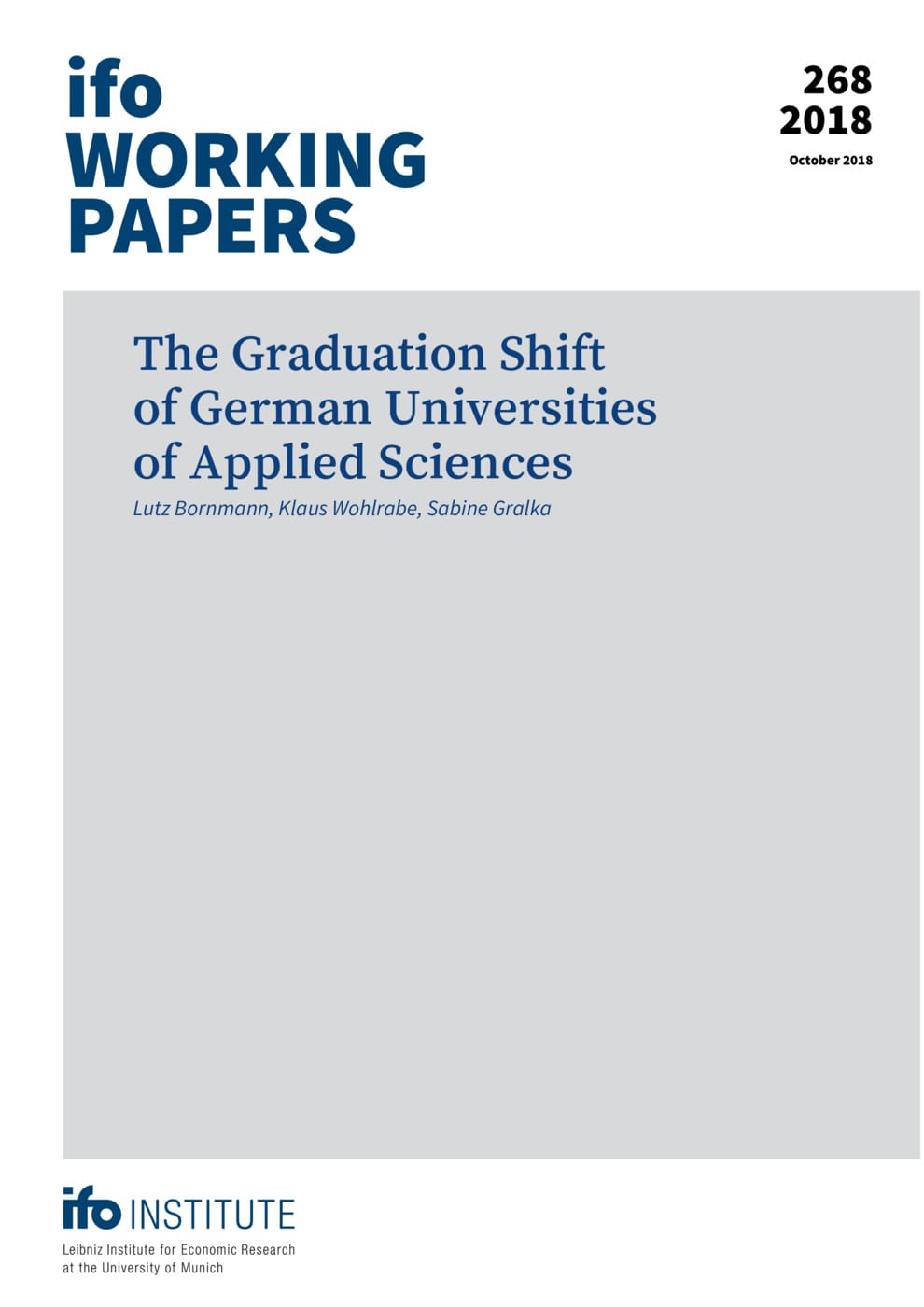The Graduation Shift of German Universities of Applied Sciences
ifo Institute, Munich, 2018
ifo Working Paper No. 268

In research into higher education, the evaluation of completion and dropout rates has generated a steady stream of interest for decades. While most studies only calculate quotes using student and graduate numbers for both phenomena, we propose to also consider the budget available to universities. We transfer the idea of the excellence shift indicator [1] from the research to the teaching area, and particularly to the completion rate of educational entities. The graduation shift shows institutions’ ability to produce graduates as measured against their basic academic teaching efficiency. The new indicator avoids the well-known heterogeneity problem in efficiency measurements. Their politically determined focus on education makes German universities of applied science the perfect sample for evaluating the graduation shift. Using a comprehensive dataset covering the years 2008 to 2013, we show that the shift produces results, which correlate closely with the results of the standard Data Envelopment Analysis (DEA) and graduation rates. Thus, we recommend the graduation shift as an alternative method of efficiency measurement in the teaching area. Compared to the DEA, the computation of the shift is easy, the shift is robust and non-economists can understand its results. We outline some limitations of the graduation shift.